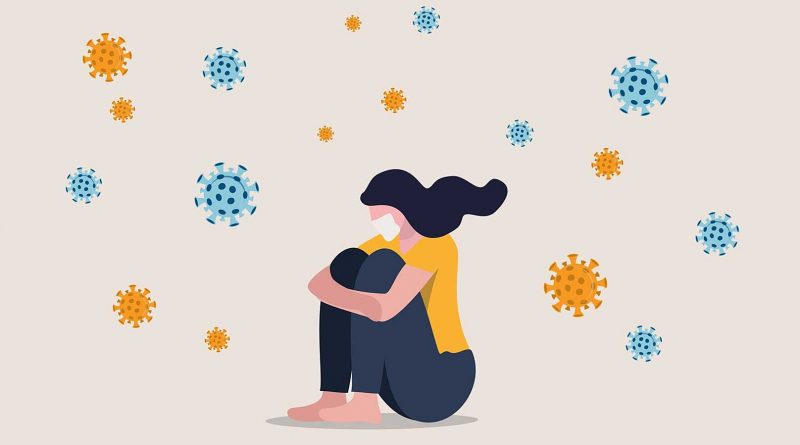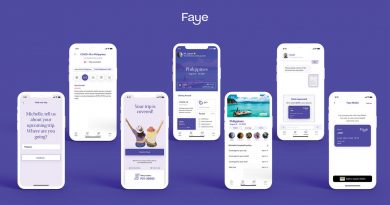How to Work Through Your Re-entry Anxiety, According to a Licensed Therapist
Over the last 16 months, we've added a lot of strange new phrases to our vernacular: social distancing, mask mandate, and PCR tests, to name a few. As we hit fully vaccinated status, a new phrase has emerged: re-entry anxiety. Put simply, re-entry anxiety is feeling stressed or hesitant about getting back to normal life. And it's absolutely natural to feel concern over returning to girls' night out, travel, or even the office, after 16 months of reduced connection and social overhaul.
Dr. Erica Sanborn, a Los Angeles-based licensed clinical psychologist, says that "re-entry anxiety may be due to a fear of getting sick or spreading COVID-19, or because social and other skills associated with pre-pandemic life have atrophied in the past year of isolation." Often, she says re-entry anxiety might manifest with "symptoms common to many anxiety disorders such as generalized anxiety, social anxiety, agoraphobia, and obsessive compulsive disorder."
The American Psychological Association (APA) reported that 49% of Americans feel anxious about returning to in-person interactions post-COVID-19. Of course, research like this is ongoing, but there is a clear trend of anxiety and avoidance as we re-emerge — and a clear correlation between reduced activity and depression.
"Many people felt depressed and hopeless during COVID-19 because we were helpless or defeated by the realities of lockdown and a deadly virus," said Sanborn. "Now that we can safely re-enter the world, our anxiety that once served a protective function is making it hard to engage in the very activities that would help lift us out of our depression."
Everyone is reacclimating to (somewhat) normal life differently, and similarly, re-entry anxiety will look different for those experiencing it. Some may feel general anxiety about the idea of returning to an office, after more than a year of working from home by themselves, while others might be reluctant to meet friends for a cup of coffee at an outdoor cafe. To help you transition back to whatever your version of regular, non-quarantined life might look like, we asked Dr. Sanborn for her suggestions, as someone who treats patients with various anxiety disorders.
Sanborn says first that it's helpful to distinguish fear from anxiety. "Fear is a healthy response to real risk — it keeps us safe. But anxiety is created in the mind, and is maintained by anxious thoughts (imagining the worst case scenario, worry) and anxious behaviors (compulsions and avoidance)," explains Sanborn.
The challenge is, we had a genuine reason to be fearful in light of the COVID-19 pandemic — which Sanborn calls an "adaptive" fear. However, COVID-19 fear has now "generated anxiety that lives in our even mind once the real risk has passed or changed."
If there's one takeaway from Sanborn's advice, it's this: "The best antidote to re-entry anxiety is to reduce avoidance — to engage in the very activities making us anxious."
Reducing Re-entry Anxiety for Travel
Even the most seasoned travelers have been working through anxiety when it comes to getting back on a plane, or returning to hotels. And it's a shame that travel — something that should inherently reduce stress — has become the cause of anxiety instead. Sanborn encourages those who are worried about traveling to start small.
"When we treat anxiety in a clinical sense, we always start small," she says. "Exposure therapy entails gradually exposing someone to small doses of the things that make them anxious and helping them manage the distress that comes up during the exposure. Once that feels manageable, we move up the ladder to more scary things."
In translating this to re-entry, an international trip or attending a large public event (say, a food festival in NYC) could be farther up the ladder. Let that be the end goal, but start at the bottom of the ladder with just a weekend away within driving distance, or a short, domestic flight taken with a partner, best friend, or someone you really trust by your side.
"Focus on what you can control — mostly, getting your vaccine and following CDC recommendations," says Sanborn. "Recognize that we accept risk every day — such as getting in a car — in order to live fulfilling lives. We do this because we accept the fact that, when we do what is in our control (follow traffic laws, put on our seat belt, drive the speed limit), it is safe enough."
Anxiety Over Going Back to an Office
Going back into an office, for some of us, will be the biggest readjustment hurdle of all. Not only could sharing an indoor, enclosed space with coworkers be anxiety-inducing from a COVID-19 perspective, resocializing with coworkers you've only seen on Zoom for the last 16 months presents challenges. Working from home afforded you the option to spend time with your family during your work day, do a few house chores on your lunch break, or at least skip a commute.
As Sanborn puts it, not all of the changes of the last year were negative. "We started spending more time at home with family, felt reduced pressure to say 'yes' to social events we'd rather say 'no' to, and were able to create individualized work schedules that, for some, have brought a sense of work/life balance that was absent in office life."
Sanborn recommends taking time during this re-entry phase to "take a hard look at which changes truly bring you more happiness and work better for your life versus those that feel good simply because they aid in avoiding discomfort." She says to ask yourself whether working from home really does make you more productive, or whether you'd just rather stay home to avoid the anxiety of going into an office.
"Does [working from home] just allow you to avoid confronting anxious thoughts or social anxiety? If so, these thoughts and anxiety will breed amidst avoidance in the long term," Sanborn reiterates.
Relearning to Socialize Outside the House
How do you go from avoiding public areas, and only entering restaurants for long enough to grab your takeout, to having dinner with friends on a crowded patio? There's no denying that enjoying a night out now comes with anxiety triggers. Sanborn says to pace yourself and prioritize rest in your schedule as you venture out into the world.
"If you have longstanding or newly developed social anxiety, being out in the world will feel more draining than you may remember," says Sanborn. "But beware of avoidance: We naturally avoid stimuli that makes us anxious to protect ourselves. The problem is that this avoidance reinforces our anxiety."
It all goes back to her original point of engaging in the activities that make us anxious. But that doesn't mean you have to start going out to dinner every night, showing up at the office five days a week, or traveling the world. Take small steps, and keep giving yourself space to recharge — that's how you'll get through this patch of re-entry anxiety.
"It's important for all of us to recognize that we have suffered a collective trauma," reminds Sanborn. "There is excitement about re-entering, but COVID-19 took things from us — loved ones have died from the virus, we lost structure and routine, the celebrations and gatherings that punctuate and bring joy to our daily lives, connections with friends — we lost our sense of freedom. Anxiety, hypervigilance, avoidance, and fear are all trauma symptoms that linger long after the danger has passed. Be kind to yourself. Go slow. Honor your anxiety, and leave space for excitement to creep in."
Source: Read Full Article




